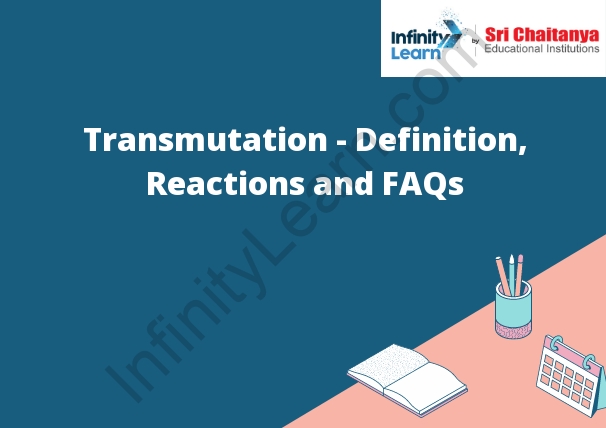Table of Contents
Transmutation Definition ; Fission and Fusion Reactions ;
Transmutation is the conversion of one element into another element. Fission is a nuclear reaction in which a heavy nucleus splits into two lighter nuclei. Fusion is a nuclear reaction in which two light nuclei fuse to form a heavier nucleus.

Nuclear Fission:
Nuclear fission is a nuclear reaction in which a nucleus of an atom splits into smaller nuclei. This process releases energy that can be harnessed to create electricity.
Fission occurs when a nucleus of an atom is hit by a neutron. The nucleus splits in two, and each half is hit by a neutron. This process continues until the nucleus is broken into pieces that are too small to be hit by a neutron.
Nuclear Fusion:
Nuclear fusion is the process by which two or more atomic nuclei are combined to form a new nucleus. In most cases, this process requires the presence of a third particle, such as a neutron, to help stabilize the resulting nucleus. When two nuclei fuse, a small amount of energy is released. This energy is greater than the energy required to fuse the nuclei together, and is the source of the fusion reaction’s power.
Nuclear fusion is used to produce energy in nuclear power plants. In a typical nuclear power plant, uranium-235 is used to create a nuclear reaction. The uranium-235 is placed in a reactor, where it is bombarded with neutrons. This causes the uranium-235 to split into two smaller nuclei, called fission products. These fission products are then heated to very high temperatures. This heat is used to create steam, which powers a turbine that generates electricity.
In a fusion reactor, the same process is used, but the uranium-235 is replaced by a mixture of two lighter atoms, such as hydrogen. When these atoms fuse, they create a heavier atom, such as helium. The helium atom is then split into two protons and two neutrons, which create a new nucleus. This process releases a large amount of energy, which can be used to generate electricity.
Transmutation Reactions
A transmutation reaction is a chemical reaction in which one element is changed into another element. This can be done through either nuclear or chemical means. In nuclear transmutation, the reaction is caused by the bombardment of an element with subatomic particles, such as neutrons. In chemical transmutation, the reaction is caused by the interaction of two or more elements.







